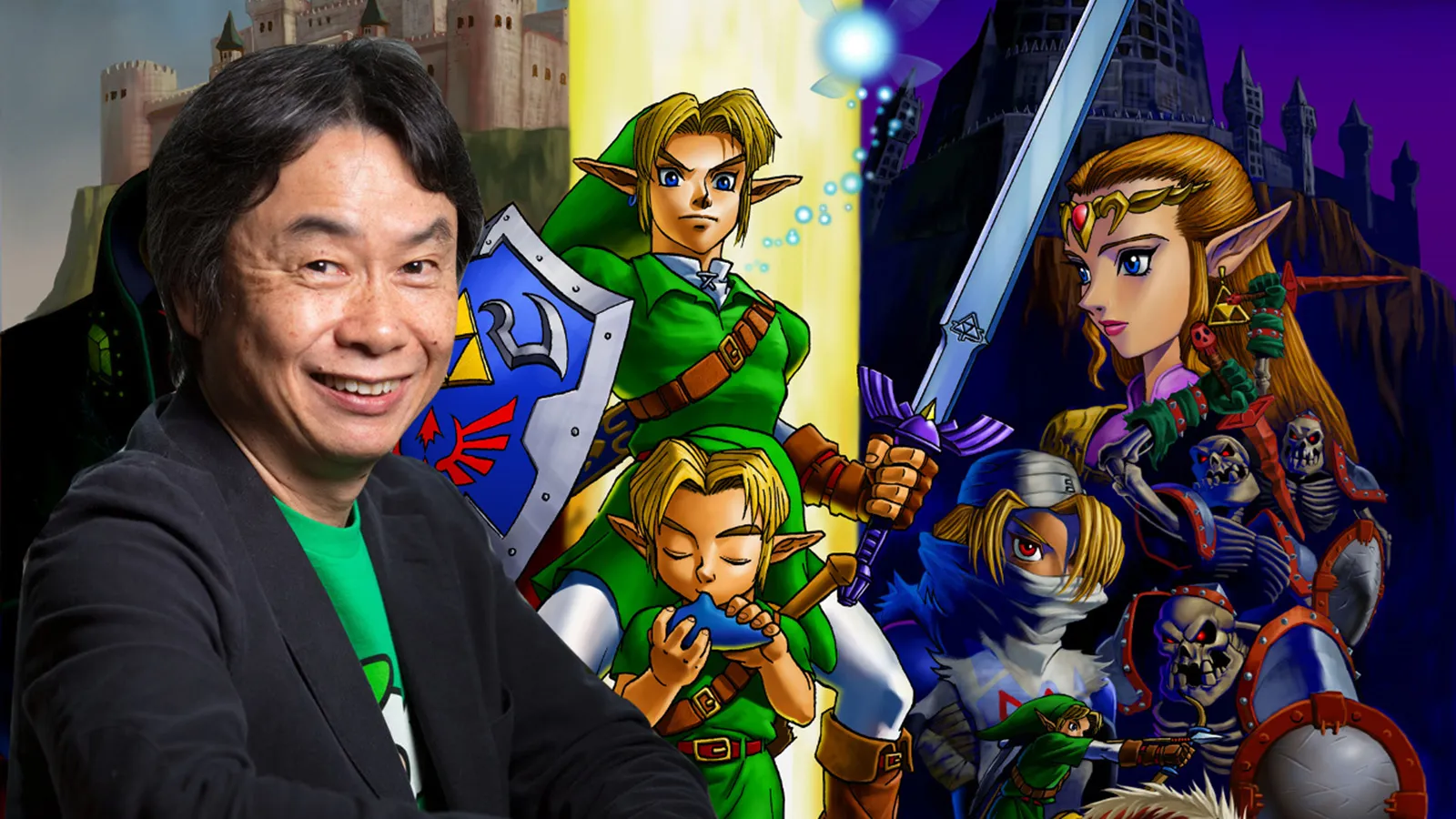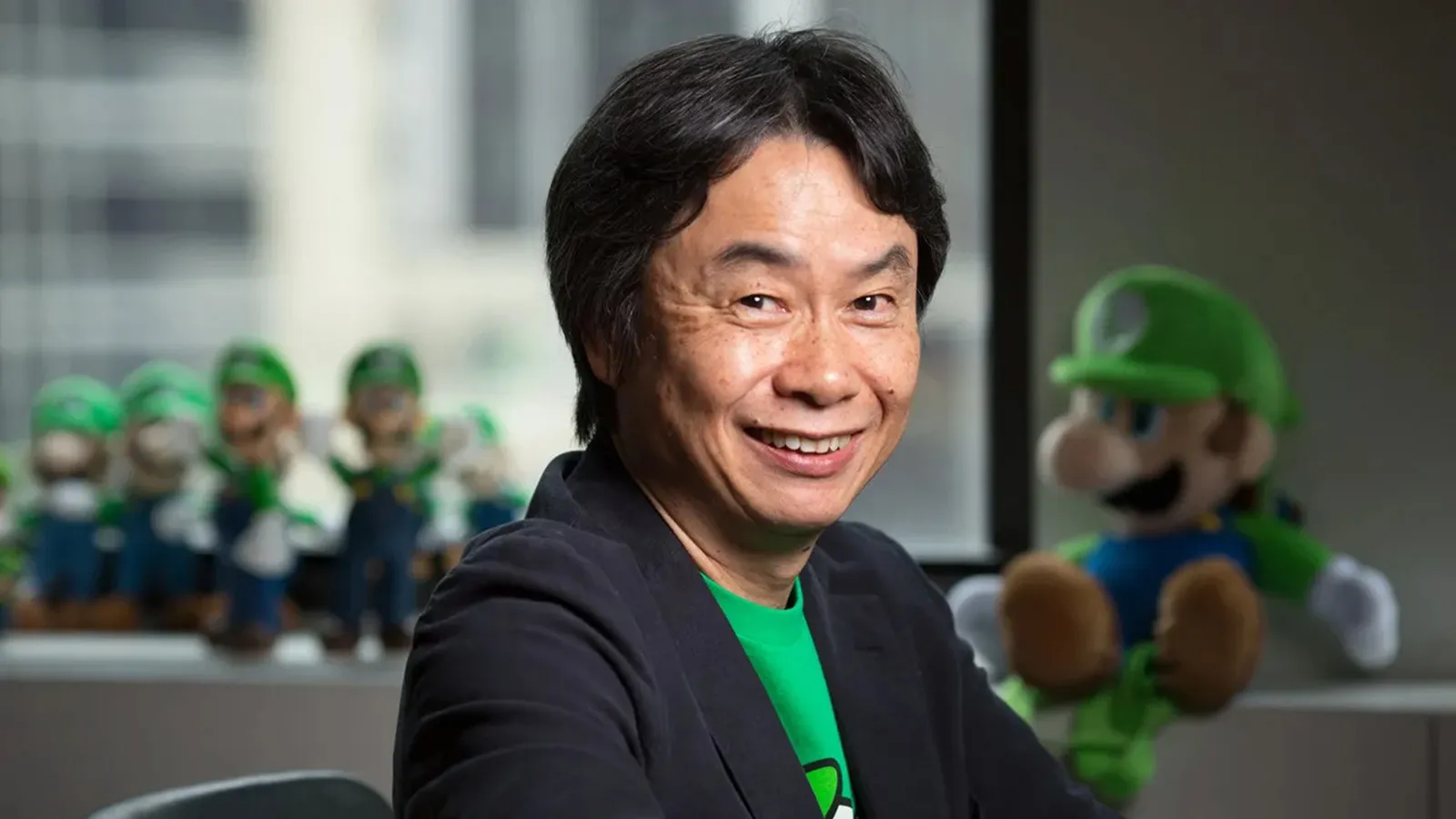Shigeru Miyamoto: True Superhero of Wholesome Gaming
In the ranks of gaming developers, one man stands apart from the pack. Shigeru Miyamoto has been dominating the games industry for the last 40 years, a reign that has seen his countless creations dominate the sales charts and delight successive generations of gamers. What makes his success more remarkable is that he has achieved it while constantly pushing against the trends of a games industry that strives for more “mature” themes. Miyamoto has always fought to travel in the other direction, crafting wholesome play experiences that may seem childish at first glance, but are inclusive to all ages because - in addition to being bright, cute, and fun - they’re always perfectly constructed gameplay experiences. As this True Superhero knows, quality trumps all.

The Legend of Zelda: Shigeru’s Awakening
Shigeru was born in 1952 in the town of Sonobe, a short drive north of Kyoto. His father was an English teacher, and although his family were not poor Shigeru describes them as “of modest means”. They did not own a car or a television set, and as a child Shigeru largely made his own entertainment. He would fashion rudimentary toys and puppets from wood and string he found around the house, and he would take these toys with him as he explored the natural landscape around Sonobe. One local landmark of particular interest was a cave that he discovered while rummaging through foliage when he was eight or nine years old. The cave turned out to be labyrinthine, and - in a story that has now passed down into Nintendo folklore - young Shigeru spent an entire summer exploring it, armed only with a lantern and paper. He would later credit these early spelunking efforts as the inspiration for one of his most popular creations, the cave-riddled landscape of Hyrule that forms the setting for the Legend of Zelda series.
It was his youthful propensity for engineering, rather than exploration, that guided his education. After graduating from high school he studied industrial design at college, but by his own admission was a terrible student, taking five years to finish what was supposed to be a four year course. Despite his qualification, his ambition was to become a manga artist, but he was unable to find work either as an artist or an engineer. Eventually Shigeru’s father took matters into his own hand, and in 1977 managed to secure his son an interview with Nintendo.

How Mario got his name
At the time, Nintendo was a company in transition. It had been a traditional toy and card game manufacturer since its inception in 1889, but throughout the 1970s it had been branching out into the exciting new world of electronic games, with some success. Miyamoto initially joined the company as an artist, working on the graphics for the long-forgotten Sheriff, one of Nintendo’s first arcade cabinets, released in 1979. Sheriff’s cowboy themes reflected Nintendo’s own ambitions of the time, as they were trying to break into the burgeoning North American arcade market. Miyamoto also worked as an artist on the company’s next attempt, Radarscope, but this was a commercial disaster. Nintendo’s New York warehouses were filled with unsold Radarscope cabinets, and the company’s newly formed American division, Nintendo of America, faced certain bankruptcy. Nintendo’s president, Hiroshi Yamauchi, was prepared to fund one last roll of the dice: he declared that the unsold Radarscope cabinets should be converted to play a new game, and he put Shigeru Miyamoto in charge of developing it.
"The brand new social experience where you activate your gaming skills as you train like a spy."
- TimeOut
Take on thrilling, high-energy espionage challenges across different game zones.

Miyamoto’s colleagues were unimpressed, with many openly declaring that the company was finished. Miyamoto had no programming experience, although he was able to call upon the assistance of Gunpei Yokoi, the legendary veteran responsible for the company’s hugely popular Game and Watch series, and who would later create the Nintendo Game Boy. Under Yokoi’s direction Miyamoto created two of the most iconic characters in video game history: a furious barrel-throwing gorilla named Donkey Kong, and his nemesis, a persistent and exuberantly mustachioed plumber named Jumpman. When the finished product - Donkey Kong - arrived at NoA’s warehouse, the staff were despondent. They hated the game, and at first only carried out the conversion process on two Radarscope cabinets in the certainty that the new game would also bomb. They also decided that Jumpman looked a lot like their warehouse manager, Mario Segale, and slapped a decal on the side of the cabinets identifying the game’s hero as “Mario”. To their great surprise, the two cabinets they released into the wild were hugely successful, and Donkey Kong would go on to become the biggest grossing arcade game of 1981 and 1982. Meanwhile Mario would go on to become one of the highest-grossing media franchises of all time, taking nearly $50bn in revenue in the forty years since Donkey Kong’s launch.
The True Superhero of wholesome gaming
This was just the start of an extraordinary career that has seen Miyamoto compared to both Walt Disney and Steve Jobs. With his resume of iconic character designs and hugely popular gaming franchises, the comparison to Disney is obvious. The parallels with the career of Steve Jobs are harder to spot, but in his role as a Nintendo director Miyamoto has been closely involved in a huge number of hardware and software innovations, many of which have had an enormous impact not just on video gaming, but the wider world of consumer electronics. In particular, Nintendo’s development of touch screen technology in 2004’s Nintendo DS console and the use of motion controls for the 2006 Wii console have demonstrated the commercial viability of both these technologies in consumer products, and seen their use become widespread. Within the gaming sphere, the list of hardware innovations that started on Miyamoto’s drawing board is absurdly long, covering everything from d-pads to analogue controls. Meanwhile, his games have consistently pushed the boundaries and set benchmarks that take other firms years to meet, most notably 1996’s Super Mario 64, which served as a textbook for other developers looking to create 3D gaming environments for many years to come.

While comparisons with other legendary designers come easy, there is one area in which Miyamoto stands completely alone; his commitment to uncomplicated, wholesome play. All of his game designs are rooted in his own playful experiences, from the childhood cave exploration that led to the Legend of Zelda to the middle-aged dalliances with gardening and puppy-rearing that led to Pikmin and Nintendogs respectively. Similarly, all of his game designs seek to be as inclusive as possible, with bright cheerful game worlds that are suitable for all ages. In an industry that is constantly striving to be seen as “mature”, Miyamoto stands apart as a designer who is happily designing games for kids that adults also want to play, simply because he’s so incredibly good at making them. Of course, his own personality - cheerful, avuncular, and humble to a fault - helps to cement this wholesome reputation, as does the fact that there’s clearly no artifice with Miyamoto. His unswerving dedication to creating fun, inclusive video games that delight the widest range of people possible - in the most wholesome way possible - shines through his personality as well as through the games themselves.
SPYSCAPE+

Join now to get True Spies episodes early and ad-free every week, plus subscriber-only Debriefs and Q&As to bring you closer to your favorite spies and stories from the show. You’ll also get our exclusive series The Razumov Files and The Great James Bond Car Robbery!


Gadgets & Gifts
Explore a world of secrets together. Navigate through interactive exhibits and missions to discover your spy roles.
Your Spy Skills
We all have valuable spy skills - your mission is to discover yours. See if you have what it takes to be a secret agent, with our authentic spy skills evaluation* developed by a former Head of Training at British Intelligence. It's FREE so share & compare with friends now!
* Find more information about the scientific methods behind the evaluation here.


Stay Connected
Follow us for the latest
TIKTOK
INSTAGRAM
X
FACEBOOK
YOUTUBE